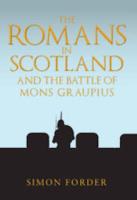
Amberley (2019) h/b 286pp £20 (ISBN 9781445690551)
The seven year period (starting in AD 77 or 78) when Agricola was governor is the best recorded period in the history of Roman Britain. Tacitus, who is generally regarded as a reliable historian, has provided a detailed account of the period. He gathered the facts from an authoritative source, namely Agricola himself. Since Tacitus was married to Agricola’s daughter, naturally we expect the story to be slanted in Agricola’s favour, but not to the extent of distorting the basic facts.
This book challenges those comfortable assumptions. On page 20 the author states: ‘It is certainly the case that Tacitus is not and should not be taken to be someone who wrote accurate history. He wrote with a purpose in mind, to show how life was terrible under the tyrant Domitian, and to contrast this with how life had been better “in the olden days”, i.e. in Caesar’s time. The Agricola should be seen as a moral work and not a history, and it was probably understood as such at the time of writing.’
The story as told by Tacitus runs as follows. In year 1, Agricola subdued Wales and reformed the administration of the province. In year 2, he subdued Brigantia. In year 3, he invaded Scotland and gained control of all territory up to the river Tay. In year 4, he consolidated the territories which he had gained and established forts on the estuaries of the Clyde and the Forth. In year 5, he campaigned in western Scotland, defeating unidentified tribes. In year 6, he campaigned in the highlands of eastern Scotland, dividing his army into three sections. The Caledonians united and mounted a night attack on the Ninth Legion. Agricola sent a response force, which warded off the attackers. The Romans pressed on with the aim of conquering all Scotland. They also commenced the construction of a fortress at Inchtutil, overlooking the river Tay. In year 7, the Romans headed north to ‘Mons Graupius’ where they encountered a Caledonian army of 30,000 men headed by a chieftain called Calgacus. In the ensuing battle the Romans triumphed. In the following spring Agricola returned to Rome.
The author lists all Roman marching camps found in eastern Scotland in a table on page 122. There follows a detailed discussion of each camp, which occupies the central part of the book, including some fine photographs. The author concludes that most of them were not large enough to accommodate an army of the size described by Tacitus. Furthermore, he argues that the distribution of camps does not support Tacitus’ description of the army being divided into three sections. This is because there is no grouping of camps at around 43 acres, each representing a single legion. He is particularly sceptical about Tacitus’ description of the night attack on the Ninth Legion, which he regards as improbable. More generally, he doubts that Agricola was the first general to campaign north of the Tyne/Solway line.
The author concludes that although Agricola campaigned in Scotland, Tacitus’ account of events is muddled and inaccurate. He accepts that there was a major battle between the Roman army and the natives at Mons Graupius. He identifies that location as Moncrieffe Hill, Perth.
This is a thought-provoking work with which some (including this reviewer) will disagree, but it is none the worse for that. Anyone with a serious interest in the early history of Scotland or the history of Roman Britain would do well to study it.
Rupert Jackson
